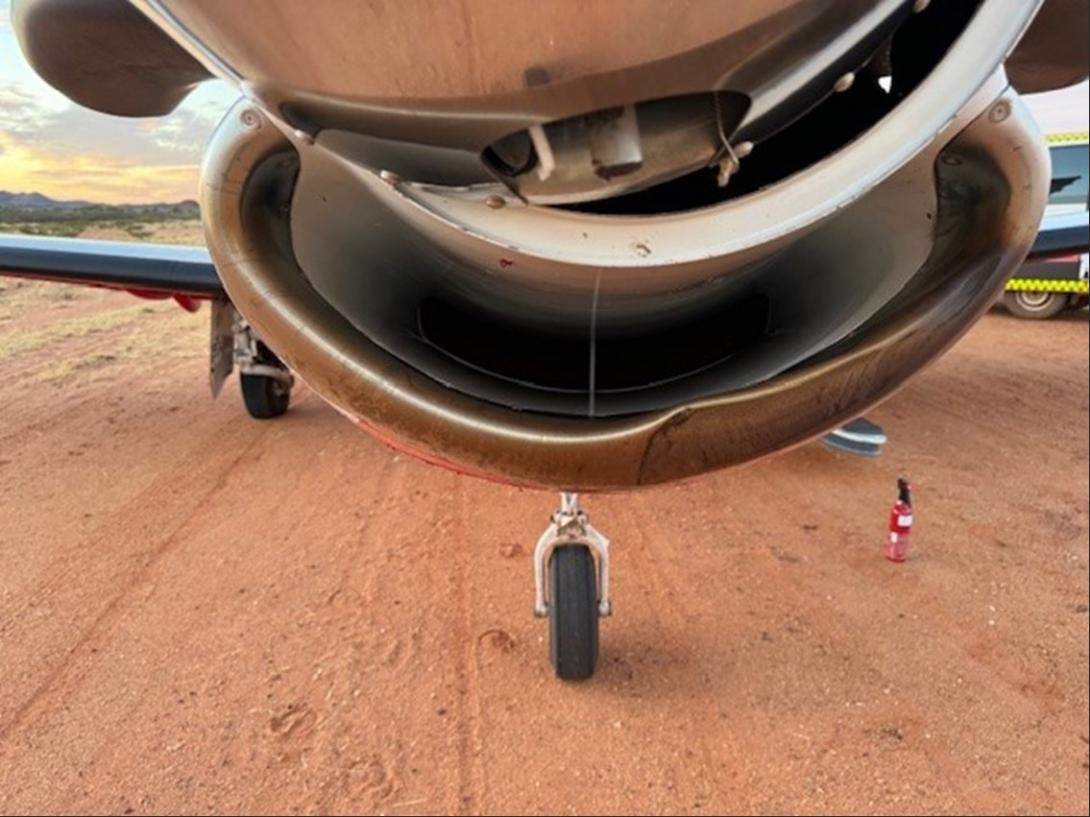What happened
On 18 June 2024, at about 0325 local time, a Pilatus PC-12/47E was conducting a non‑scheduled medical transport flight from Newman Airport to Nullagine ALA, Western Australia. The pilot, along with 2 medical crew members and a patient, were on board.
The aircraft overflew the airport and joined upwind for a circuit to land on runway 32. Due to the flight being conducted at night, the pilot could not conduct a low level pass to ensure the runway was clear. During the landing roll, at approximately 60 kt, the pilot observed a cow to the left of the runway and applied maximum braking and reverse thrust. The pilot turned right to avoid the cow, however the aircraft struck another unobserved cow, which impacted the nose and left wing of the aircraft. The pilot secured the aircraft, ensured the crew members and patient were uninjured, and conducted an inspection. The aircraft sustained substantial damage to the propellor, engine, left wing and landing gear.
Figure 1: Aircraft damage

Source: Supplied
Safety action
The aerodrome operator has taken action to update the Nullagine entry in the En Route Supplement Australia (ERSA)[1] to include information about the risk of wildlife hazards on the runway and plans to repair damaged aerodrome fencing.
The aircraft operator has updated their Airstrip Directory for Nullagine ALA to include a note that the fencing is in a state of disrepair and the vermin risk has been elevated from medium to high with a requirement for mandatory wildlife/stock inspections day and night.
Safety message
Where an ongoing wildlife hazard to safe aircraft operations exists, aerodrome operators should include an appropriate warning in the ERSA.
Ground-based animal strikes can pose a serious safety risk for aircraft, as found in the ATSB research report, Australian aviation wildlife strike statistics (AR-2018-035). Pilots should mitigate this risk as best they can by maintaining adequate situational awareness, particularly when operating at regional strips known for significant wildlife hazards.
Guidance for aerodrome operators for the management of wildlife hazards at aerodromes is published by the Civil Aviation Safety Authority in Advisory Circular AC 139.C-16 Wildlife hazard management.
About this report
Decisions regarding whether to conduct an investigation, and the scope of an investigation, are based on many factors, including the level of safety benefit likely to be obtained from an investigation. For this occurrence, no investigation has been conducted and the ATSB did not verify the accuracy of the information. A brief description has been written using information supplied in the notification and any follow-up information in order to produce a short summary report, and allow for greater industry awareness of potential safety issues and possible safety actions.
[1] En Route Supplement Australia (ERSA): a directory for Australian aerodromes that includes details of an aerodrome and details of available air traffic and ground services, navigation aids and public facilities and any special procedures.


